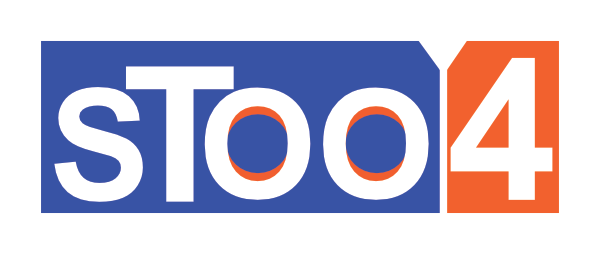Comparison of basic coordination assessment tests with the newly constructed test in rhythmic gymnastics
|
Teaching (Today for) Tomorrow: Bridging the Gap between the Classroom and Reality 3rd International Scientific and Art Conference
|
|
Rebeka Stojković1, Josipa Radaš21Faculty of Kinesiology, Josip Juraj Strossmayer University of Osijek, stojkovicrebeka@gmail.com 2Faculty of Kinesiology, University of Zagreb, josipa.radas@kif.hr |
|
| Section- Kinesiology education and sports | Paper number: 55 |
Category: Original scientific paper |
Abstract |
|
Rhythmic gymnastics is a conventional sport that contains its own artistic component. In addition to the five apparatus that gymnast manipulates with, following the rhythm and tempo of the music, she also controls the movements with her body, which creates unity in the beauty of the performance. The same requires great coordination ability, as one of the most important motor abilities in rhythmic gymnastics. The aim of this paper was to construct a coordination assessment test applicable specifically to rhythmic gymnastics. The sample consisted of 40 rhythmic gymnasts aged 9-12. For coordination assessment, three already known tests and one newly constructed test were used: "Side gallop with rope". The results show that the newly constructed test measures the coordination necessary for the successful performance in rhythmic gymnastics, but only in the observed sample. There is a statistically significant difference between individual measurements (p<0,05) and a statistically significant correlation (p<0,001), therefore this test is considered reliable. It would be good to implement the newly constructed test when selecting children for rhythmic gymnastics program, as well as during transitive measurements in the training process. |
|
Key words: |
|
metric characteristics; motor abilities; newly developed test; rhythmic gymnasts |
Introduction
Motor coordination is no doubt the most important ability in terms of the overall performance and motor behavior of human beings. It is practically implemented in every movement structure, from the simplest to the most complex forms of motion (Purenović – Ivanović, 2014). Success in any sport, as in any other activity, depends on a number of abilities and dimensions that a certain individual must possess. It is very important how developed these abilities are and how far they are from the ideal model (Cvenić, 2007). Coordination as a motor ability is certainly one of the indispensable ones that must be found in every sport. In rhythmic gymnastics, besides flexibility, coordination takes a leading place in the specification equation of motor abilities. It can be manifested in a combination of dance, gymnastics and apparatus handling, movements of impressive motor structures that are characterized by beauty, elegance and harmony, with the constant striving to achieve perfectly coordinated and precisely executed motions and movements (Ivančević, 1976). Due to this, rhythmic gymnastics is a sport which requires the complexity and high level of motor abilities (flexibility, whole – body coordination, dynamic and static balance, whole – body movement time and hand eye coordination) (Pavlova, 2011). Indeed, precise muscular efforts as well as space and time parameters of movements are especially important in this sport (Purenović – Ivanović et al., 2016). Because of the exceptional importance of motor coordination abilities for the performance, as for the processes of orientation, selection and monitoring in the field of rhythmic gymnastics, this issue is given special attention. For the coordination abilities assessment in rhythmic gymnastics, specific tests are suggested (Moskovljević & Orlić, 2012) even though many of the conducted studies were based on general coordination tests. Tomac (2020) constructed a „Tramp jump“ coordination assessment test where the gymnast’s task is to jump over two parallel lines after the initial sign, in such a way that, in each jump, the torso crosses the projection of a vertically placed stand in front of the trampoline. Coordination training athletes specializing in gymnastics should be one of the priorities in the system physical and health culture as well as sport itself, which is proved by Tereschenko et al. (2016), who constructed a specific battery of motor abilities tests and supported the effectiveness of the coordination training program. The aim of this paper is to construct a coordination assessment test applicable specifically in rhythmic gymnastics.
Methods
The sample consisted of 40 rhythmic gymnasts aged 9-12, members of a Rhythmic Gymnastics Club „Rondo“ from Osijek. The participants were measured voluntarily and the parents of the gymnasts gave their written consent for the study. It should be pointed out that the gymnasts were free of injuries, warmed up before the testing and familiar with the protocol of this research. The study was conducted at the sports hall of St. Anne's Elementary School in Osijek. To assess coordination, three familiar tests with verified metric characteristics were used: „two handballs throw“, „run and spin with hoops“ and „rolling the ball with non-dominant hand“. Another new test “Side gallop with rope” was used as well. Tests were performed twice in the same way from the beginning of April to the end of May 2024.
Two balls – throw and catch
The gymnast stands on a straight line with two handballs, one in each hand. The task is to throw the balls into the air at the same time, turn 360° and catch both balls. The examinee gets points on how many balls she catches. Also, it should be pointed out that the spin must be complete 360° otherwise the result is 0 points. The gymnast throw the balls five times in one test. The test is performed three times (Foretic et al., 2010).
Two hoops – run and spin
There are two lines on the ground 750 cm apart and two hoops are placed between them. The distance between the start and the first hoop as well as the distance between the second hoop and the return line is 250 cm. The gymnast stands on the starting line and at the sign runs towards the return line and away from it by running backwards. The task is to enter each hoop and make a 360° spin, two times moving forward and two times backwards. The test is performed three times with 30 seconds breaks (Foretic et al., 2010).
Rolling the ball with non-dominant hand
The purpose of this test is to assess upper extremity coordination, which is defined as the ability to manipulate objects in a space with obstacles. Three parallel lines are marked on the ground, three meters apart. There is one stand placed exactly in the middle of each line. The gymnast starts on the first line, facing the direction of movement and lightly leans the ball with non – dominant hand. On the signal, she rolls the ball on the ground changing the direction between and around the stands. The task is performed in four lengths and completed after the gymnast crosses the finish line. It is performed three times with 30 seconds breaks (Tomljenović, 2018).
Side gallop test with rope
Two parallel lines are marked on the ground, 12 meters apart. The gymnast starts the test standing on the starting line at the signal. The task is to perform the side gallop passing through the rope. When both legs cross the second line, the body turns 180° and the gymnast returns to the starting line performing the same element by passing through the rope backwards. Test is completed after the gymnast crosses the line with both legs and it is performed three times.
Microsoft Excel 365 was used for data entry, preparation and visualization. The statistical analysis was performed on all data using IBM SPSS Statistics 26. To describe sample statistics, average, standard deviation, relative standard deviation, skewness and kurtosis have been used. We also used the Shapiro – Wilk test to determine the significance of deviations from normal distribution and Box – and – Whisker plots to visualise the distributions of results. The Pearson correlation coefficient was used to determine the correlation between the Side gallop test and other coordination tests and to determine relationships between all repetitions of the Side gallop test. All the tests were%

